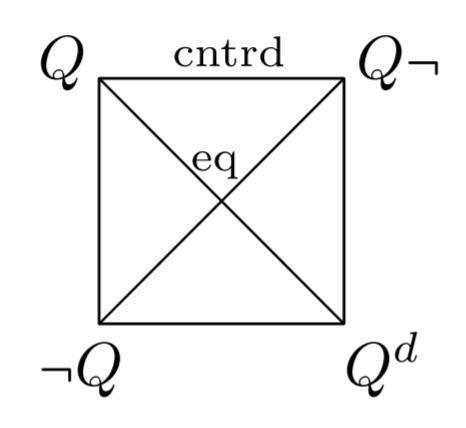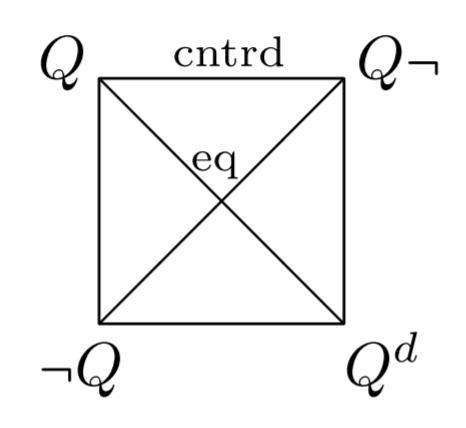
The Square of Opposition and Generalized Quantifiers (2012), p. 224
by D'Alfonso, Duilio

Copyright according to our policy
Caption
- Using the modern version of the square, we can easily visualize different patterns of logical relations in the square(Q) of a quantifier Q. From left to right, the first square sketches the logical pattern for ultrafilters (Q and Q¬ are contradictory), the second for filters (Q and Q¬ are contrary), the third for intersective quantifiers (Q and Q¬ are compatible)
- Aristotelian family
- A Single PCD
- Boolean complexity
- 2
- Number of labels per vertex (at most)
- 1
- Uniqueness of the vertices up to logical equivalence
- No
- Errors in the diagram
- No
- Shape
- Square (regular)
- Colinearity range
- 0
- Coplanarity range
- 0
- Cospatiality range
- 0
- Representation of contradiction
- By some other geometric feature
Logic
Geometry
- Conceptual info
- No
- Mnemonic support (AEIO, purpurea ...)
- No
- Form
- none
- Label type
- symbolic
- Symbolic field
- logic
- Contains partial formulas or symbols
- Yes
- Logical system
- generalized quantifier theory
Vertex description
Edge description
- Diagram is colored
- No
- Diagram is embellished
- No
- Tags
- Boolean closed ;
- duality
Style
Additional notes
- In this diagram we have $\neg Q$ logically equivalent to $Q\neg $, and $Q$ to $\neg Q\neg $.
This is a twisted square: the contradiction (external negation) relations are on the vertical edges, rather than on the diagonals.